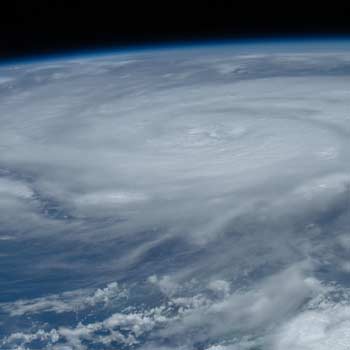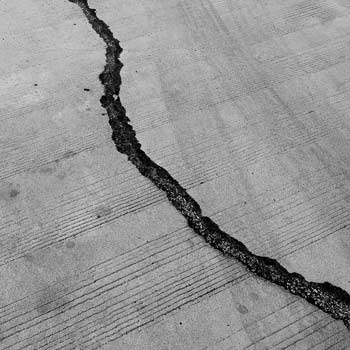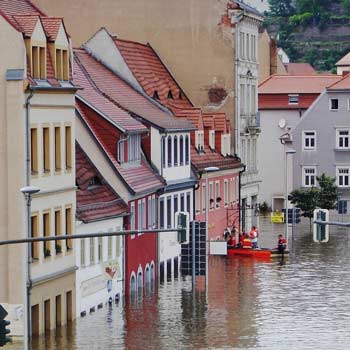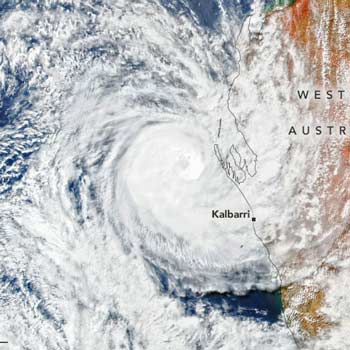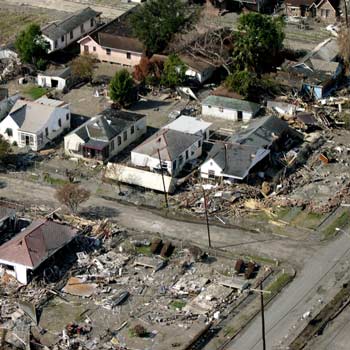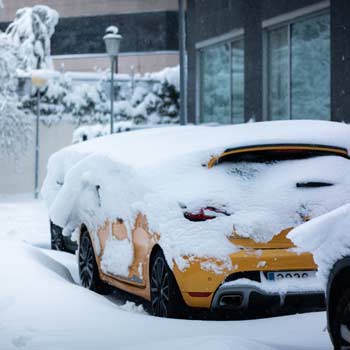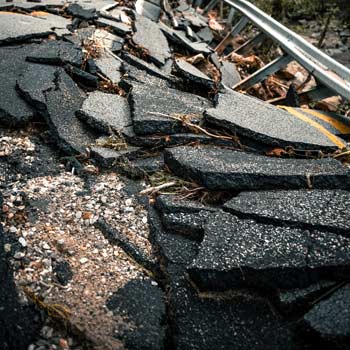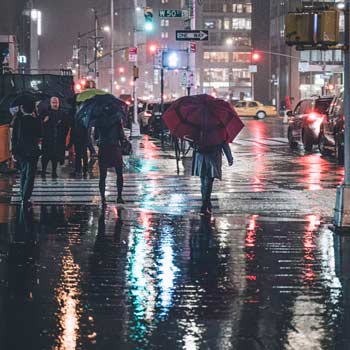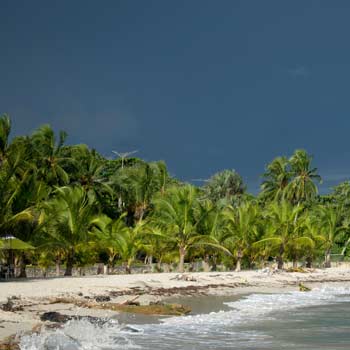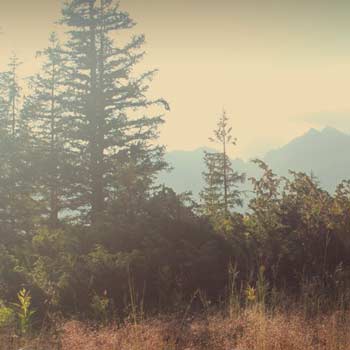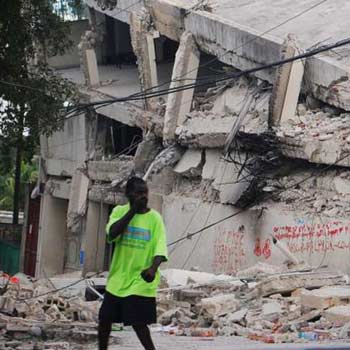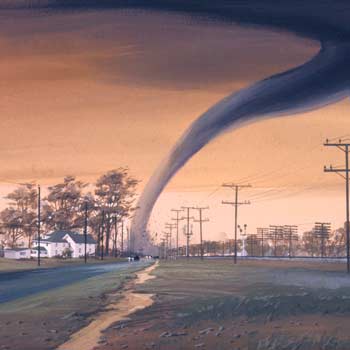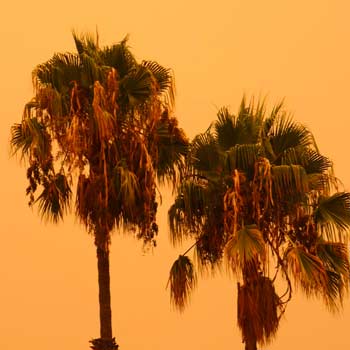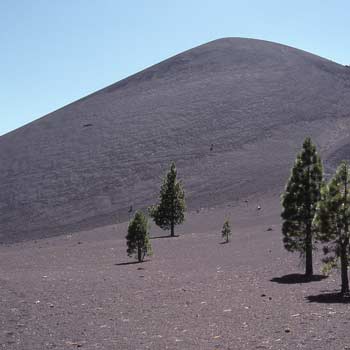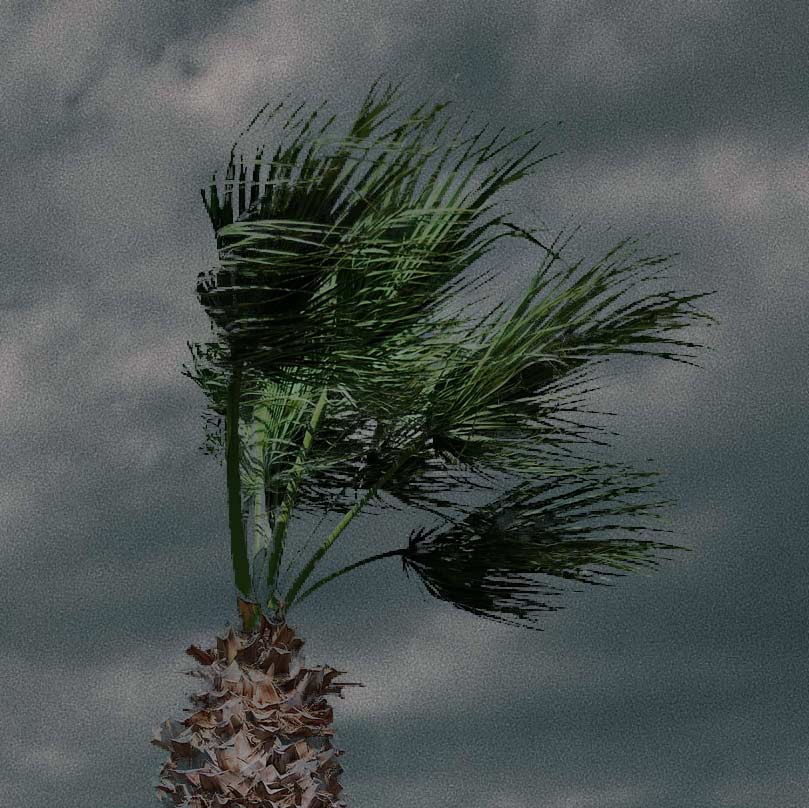1) 16 and 25
2) 17 and 25
3) 16 and 40
Correct answer: 3. In 2005, Hurricane Katrina made landfall on August 29 near Buras as a strong Category 3 storm; exactly 16 years later, Hurricane Ida made two landfalls as a Category 4 hurricane, the first near Port Fourchon and the second soon after southwest of Galliano. The difference in distance between Katrina’s landfall and Ida’s first landfall is about 40 miles. They are two of the most destructive hurricanes to hit Louisiana.
4) 17 and 40
1) The M9.0 Tohoku earthquake in 2011
Correct answer: 1. According to the United States Geological Survey (USGS), the hypocenter was located at a depth of ~50 km, about 65 km from the coast of Fukushima. The earthquake occurred close to the downdip edge of the subducting interface, which ruptured during the M9.0 Tohoku earthquake almost exactly 10 years ago on March 11, 2011. The Japan Meteorological Agency (JMA) views the recent M7.1 quake as an aftershock of the Tohoku quake.
2) The M6.9 Kobe earthquake in 1995
3) The M7.9 Kanto earthquake in 1923
4) The M6.5 Kumamoto earthquake in 2016
1) Bernhard
2) Berit
3) Brigitte
4) Bernd
Correct answer: 4. Of all the natural hazards that cause property damage in Europe, flood is the costliest. The Rhineland-Palatinate and North Rhine-Westphalia regions in Germany in particular experienced heavy and, in some cases, historic rainfall. Other countries impacted by the July European Floods include Belgium, Switzerland, Austria, Luxembourg, and the Netherlands.
1) Upper-level low
2) Mid-latitude trough
3) Fujiwhara effect
Correct answer: 3. Tropical Cyclone Seroja’s brief interaction with Tropical Cyclone Odette was interesting because of the Fujiwhara effect but noteworthy because of how it impacted the surviving storm’s landfall. Tropical cyclones in Australia tend to occur far more frequently near the northern half of the continent, generally above 30° latitude south, as most form off the northwest coast. It is extremely rare for tropical cyclones to travel as far south as Geraldton, which is what Tropical Cyclone Seroja did in April. Geraldton had not experienced such a storm since 1956.
4) Weak ridge
1) California
2) Texas
3) Florida
4) Louisiana
1) 13 cm (5 inches); 2018
2) 25 cm (10 inches); 2003
3) 38 cm (15 inches); 1989
4) 50 cm (20 inches); 1971
Correct answer: 4. Over the course of four days in January, up to 50 cm (20 inches) of snow fell in Madrid and even higher totals were reported in surrounding areas; this was the region’s greatest accumulation since 1971.
5) 63.5 cm (25 inches); 1921
1) 3rd
2) 7th
3) 15th
4) 19th
1) Frontal zone; Henri
Correct answer: 1. On September 1, Ida was downgraded to an extratropical low as it moved over the Appalachians and into the Northeast, where it combined with a frontal zone—a boundary or transition zone between two air masses of different density, and thus (usually) of different temperature—and produced prodigious rainfall on September 1 and into September 2. The Central Park weather station recorded 3.15 inches of rainfall in 1 hour, breaking the record set only a few days prior by Tropical Storm Henri. In just a few hours, up to 9 inches fell across the region.
2) Atmospheric river; Irene
3) Barrier jet; Sandy
4) Squall line; Isaias
1) A tropical cyclone with a maximum wind speed exceeding 120 mph.
2) A tropical cyclone with a maximum wind speed exceeding 137 mph.
3) A tropical cyclone with a maximum wind speed exceeding 150 mph.
4) All of the above.
Correct answer: 4. There is no one accepted definition of a Super Typhoon. The China Meteorological Agency (CMA), for example, uses a maximum wind speed exceeding 120 mph while the Philippine Atmospheric, Geophysical and Astronomical Services Administration (PAGASA) uses 137 mph. Following Joint Typhoon Warning Center practice, AIR employs the term super typhoon only for storms in the Northwest Pacific with 1-minute sustained winds in excess of 150 mph.
1) Heat burst
2) Heat dome
Correct answer: 2. A heat dome is caused by a ridge of high pressure that becomes stuck in the atmosphere, trapping a mountain of warm air.
Throughout 2021 dry, hot conditions ravaged large parts of Canada—setting a new Canadian record high temperature of 46.6° Celsius—1.6° higher than the previous record. For crops the impact of this year’s drought is likely to be significant, if not historic.
3) Heat island
4) Harvest effect
1) Was more destructive than the 2010 earthquake due to the larger magnitude
2) Occurred on the same fault system as the 2010 earthquake, though not in the same location.
Correct answer: 2. The temblors occurred on the Enriquillo-Plantain Garden Fault, although the 2010 earthquake occurred on a smaller, previously unknown fault associated with the system, the Leogane fault.
3) Ruptured the exact same region as the 2010 earthquake, conclusively identifying it as an aftershock.
4) Caused minimal damage because all buildings following the 2010 earthquake were retrofitted to withstand such large events.
1) April through June; May
Correct answer: 1. Tornadoes can occur at any time of year in the U.S. but activity peaks from April through June. In March it generally ramps up significantly, and the month can see twice as many tornadoes as February. May is the top month for tornado touchdowns in the U.S. with an average of 276 for the period 1996–2015. In the first quarter of 2021, there were 162 tornadoes reported.
2) There is no peak season; July
3) March through June; April
4) March through May; April
1) 2020 and 2021
Correct answer: 1. Four 2021 wildfires are among the top 20 largest fires recorded in the State of California: the Dixie Fire—second only to last year’s first-ever recorded “gigafire,” the August Complex Fire—the Caldor (#14), Monument (#15), and River Complex (#17). Nine of the top 20 largest fires occurred either this year or last. Only two on the list occurred before 2003, when the Cedar Fire (#9) blazed: the Marble Cone Fire (#20) in 1977 and the Matilija Fire (#16) in 1932.
2) 2003 and 2020
3) 2018 and 2021
4) 1932 and 2020
1) Lahar
2) Lanai
3) Ligeti
4) Lehigh
Correct answer: 1. Lahars are dangerous slurry mudslides composed of water, rocks, ash, and debris of volcanic origin. Smaller seasonal events of this type are sometimes referred to as "debris flows."
1) Hurricane Pamela
2) Hurricane Ida
3) Hurricane Larry
4) Hurricane Sam
Correct answer: 4. While it never made landfall, Hurricane Sam was the strongest (Category 4), and longest-lived (12 days) hurricane of the 2021 Atlantic season, coming in at a whopping 53.8 ACE units. Sam singlehandedly accounted for nearly 40% of the season's total ACE as of its final day as a hurricane on October 5. If you add Larry’s 32.8 ACE units, the two storms combined account for the majority of ACE this season. It’s not entirely unusual for one or two storms to account for the majority of seasonal ACE.

